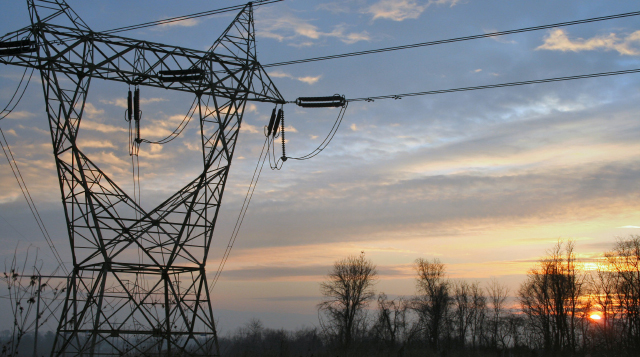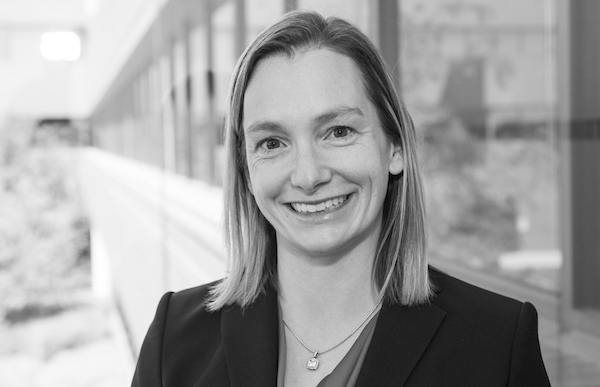Alumna uses big data and machine learning to help homeowners cut energy costs
Crank up the A/C and the temperature in the house starts falling. Simple, right?
Not quite, says alumna Marissa Hummon, Ph.D. ’09, senior energy scientist at Tendril. Turning on a home’s air conditioner requires an automatically-controlled generator operated by the local utility company to put out a little bit more power to meet those energy demands.
“But the problem with electricity is that people want to use it all at the same time,” explained Hummon, who earned her graduate degree in applied physics at the Harvard John A. Paulson School of Engineering and Applied Sciences. “On a summer day, many people across an entire state typically start feeling warm at the same time. If everyone turns on their air conditioners at once, system operators rely on generators to automatically respond, but that response is very expensive.”
Hummon and her team of engineers have developed a tech-driven solution to this problem. Tendril’s Orchestrated Energy (OE) system utilizes smart thermostats, big data, and machine learning techniques to manage demand for air conditioners, optimizing home energy use so the grid is not overloaded by thousands of A/C units switching on simultaneously.

If thousands of homeowners switch on their air conditioners at once, the electric grid is in danger of being overloaded.
Often, running a home’s air conditioner during the cooler hours, from 10 a.m. until 2 p.m., keeps the interior temperature within a comfortable range all day, Hummon said. Tendril’s system has been shown to be able to reduce a homeowner’s average power use by about twice as much as the “saver switches” that enable utilities to shut off customers’ A/C units during periods of peak demand.
“Doing this at a large scale has pretty big implications for how the grid will operate and the potential for integrating solar or wind power,” she said.
Sunny or windy days tend to come in non-continuous bursts, which makes it difficult for an operator to ensure the grid has enough power from those sources. But changing the way a house heats and cools moderates a homeowner’s net power load, which makes it easier for a utility company to supply power from intermittent sources.
While hundreds of homes now utilize OE systems, launching the product involved its share of challenges. Hummon, who joined Tendril two years ago, had to shift gears from a research orientation (her expertise involved the use of a scanning electron microscope to study quantum dots) to a more customer-focused mindset.
“People don’t want to think about electrons at all. They would like a predictable, low-cost energy bill and they would like the systems and appliances in their home to work,” she said. “The hardest part of developing this system was understanding how it should interact with users to keep them in control of their electricity use, while nudging them toward using it more efficiently.”

Hummon has found that customers don't want to think about the delivery of electricity; they just want the systems and appliances to work in a cost-effective manner.
It’s a challenge Hummon never anticipated she would encounter. After earning her Ph.D., she worked at the U.S. Department of Energy’s National Renewable Energy Laboratory in Colorado, where she conducted large-scale mathematical modeling of how the electric grid operates.
She brought that mathematical expertise to Tendril, where she helped develop a machine learning model that can predict the relationship between the temperature in the house and how much energy is being used to achieve that temperature. The algorithmic model draws on forecasted weather patterns, recorded energy usage of similar homes, and other data to fine-tune predictions.
One of her most rewarding experiences was installing a pilot system in her parent’s home. Hummon’s physicist father was skeptical that the system would work, but OE reduced their home’s energy usage by about 30 percent on a daily basis.
“That was pretty gratifying, to have my dad say I was right,” she said. “My parents are pretty good sports.”
Hummon hopes more homeowners across the nation experience similar benefits from demand side energy management, and that the growing focus on high-tech solutions leads to a sea change in the electric power industry.
“My hope is that, once this system is proven to work at a large scale, what will follow is a change in policy about acquiring new generation resources,” she said. “Our ultimate goal is for regulators, utility companies, and customers to consider managed energy as a reliable way of solving both our environmental impact problems and our cost-of-service problems.”
